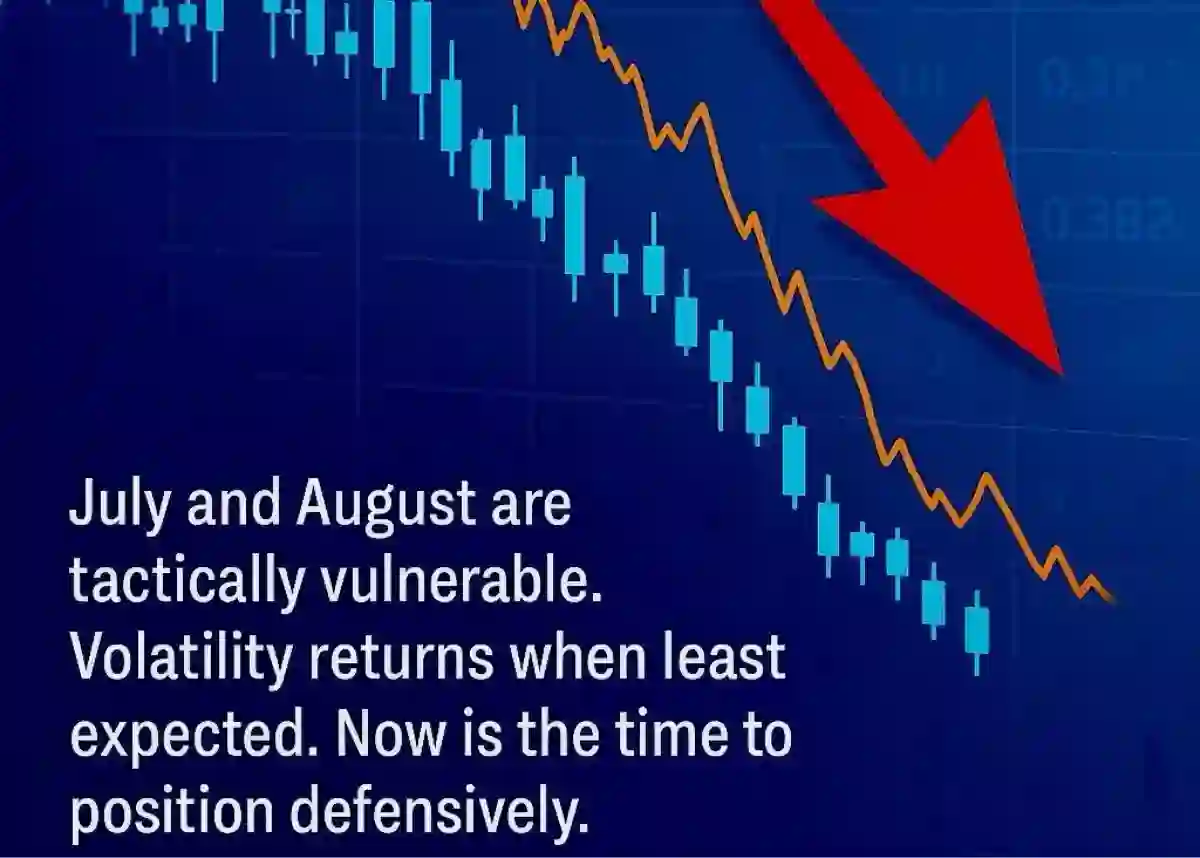Markets may look calm right now, with indexes sitting near record highs and investors breathing a sigh of relief.
But dig a little deeper, and it’s clear—we’re not out of the woods yet. July feels fragile.
The rally is losing steam, and momentum is quietly stalling.
It’s the kind of uneasy silence that often comes just before the next wave of volatility.
Back in March 2025, a warning was published in The Personal View, predicting major market turmoil from March through June.
That forecast wasn’t just accurate—it was almost spot-on.
By April, markets were in full panic mode: the VIX soared, geopolitical tensions escalated, and stock markets took a sharp hit as investors backed away.
What Sparked the Chaos—and What Comes Next
That March article wasn’t just dramatic for effect.
It pointed to several core drivers that are still very much in play:
-
A global rearmament cycle boosting defense budgets everywhere
-
Ongoing instability in the Middle East, particularly around Iran and Israel
-
Continued tension between Russia and Ukraine, with knock-on effects in Europe
-
Growing threats of cyberattacks and state surveillance becoming a dominant theme for investors
-
And a clear call: accumulate gold, a recommendation that’s been consistent since 2021
So while markets might have recovered on the surface, the forces that caused that turmoil haven’t disappeared—they’ve simply gone quiet. For now.
What Makes the Market So Vulnerable Right Now
There’s a sense of complacency setting in. That’s dangerous.
Here’s why analysts are once again urging caution:
-
News-driven shocks—geopolitical events, sudden regulations, or civil unrest—can spark instant panic
-
The risk of flash crashes or erratic trading caused by algorithms is growing
-
A serious cyberattack or infrastructure failure could jolt investor confidence overnight
-
Weak or uncertain leadership can set off fear-based selling in fragile markets
-
And perhaps most importantly, we’re seeing sky-high valuations that don’t have much backing them up
All signs point to one conclusion: now is the time to reinforce your defenses and prepare for potential downside risk.
Four Smart Strategies to Hedge Against a Market Drop
If you’re heavily exposed to equities—especially U.S. stocks—it might be a good idea to start thinking about portfolio protection.
Here are four hedging tactics that can help you weather another sudden drop:
1. Put Spread Collar
This is a lower-cost way to protect yourself. You buy a near-the-money put, sell a deeper out-of-the-money put, and fund it by selling a call.
It limits your downside while capping your upside—but keeps costs low.
2. Zero-Cost Put Spread
Buy a put that’s 3–5% below the current market, and sell one 7–10% lower.
This works well if you’re concerned about a moderate decline and want protection without shelling out too much.
3. VIX Call Options
When markets fall, the VIX—Wall Street’s fear gauge—tends to spike.
Buying VIX call options (2–4 weeks out) is a smart way to hedge against sudden volatility.
4. SPX Ratio Put Spread
You buy one at-the-money put and sell two (or more) deeper out-of-the-money puts.
This setup costs less but adds risk if the market falls too far. It’s a good tool for protecting against larger sell-offs.
These strategies can also be adjusted for other global markets—like the Euro Stoxx 50, FTSE 100, Nikkei, or JSE Top 40—which often move in tandem with U.S. stocks.
Now Is the Time to Get Defensive
The current market may look like it’s holding strong, but there are cracks forming beneath the surface.
July is especially fragile, and the next shock could hit when no one’s expecting it.
The smart move? Lock in your gains, hedge your exposure, and be ready for a sharper repricing of risk.
